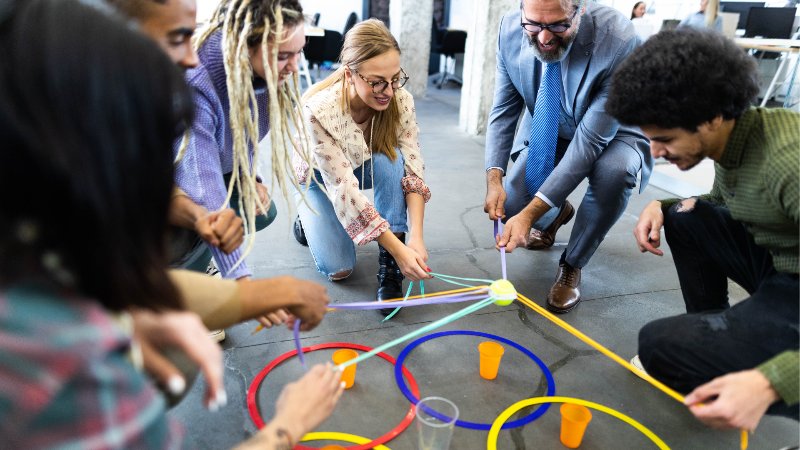Team Building: Keeping the window open

We all know the typical team-building experience: Games, presentations, laughter, awkward moments, dinners, drinks and fun. We can return from these events feeling bubbly and energised, but all-too-quickly, the feel-good vibes fade, and we slip back into routines and deadlines. Until the next team build when we hear: “Nothing really changed the last time, but let’s just go and have fun.”
However, when done right, team building can do so much more than provide a short-lived dose of bubbly Enos. Team building done well should create a relaxed and reflective space for teams to build deep connection, reimagine how they work together, create a vision for the future and gain new insights and perspectives. It should be like opening a window wide open, and allowing a fresh breeze and sunlight to flow in.
From our experience in team development and leadership, we have found that to create impactful and memorable team building sessions that bear fruit over time, we need to ensure that a few key elements are incorporated:
Create a space that builds community: From the outset, it is important to ensure the session is different from the typical workspace. Eliminate anything that fosters distance like auditorium-style seating, “death by PowerPoint” slides, microphones and even tables. Instead, focus on building a sense of safety, connection and community right from the outset.

Build connection through storytelling: Often, teams don’t really know one another, and this has been exacerbated by the remote/hybrid working model. We often hear from team leaders that their teams work in silos and/or don’t communicate well. When team members see one another as human beings first, with complex and interesting life stories, challenges, and talents, it breaks down “single stories” and stereotypes. They find common ground and build trust through owning and telling their stories. So many underlying issues facing teams are dealt with through the simple act of getting people to connect in authentic and intentional ways.
Create a safe space for accountability: Encouraging team members to reflect on their contribution to what is working and what is not working in the team, helps prevent a culture of blame, shame, and a feeling of helplessness. It reminds everyone that we all own what happens around us—whether through action or inaction—and more importantly, that we have the power to change this.
Build the team through feedback: When we are unable to give each other direct and honest feedback, we set each other up for failure, as people simply do not know what they are doing right and what they need to change. We also create a culture of gossip. We must provide tools for team members to give each other feedback with care. In my experience, we do not give each other enough positive feedback. In high-performing contexts, we are getting things right most of the time and we should celebrate this. Affirmation of what we are doing right helps us feel valued, motivates us and gives us the strength to tackle the things that are not working.
Co-create a new vision and map out how to get there: Create a space whereteam members can co-create an alternative vision of possibility for their team and allow them to package it in a powerful way that they can share with the rest of the organisation. Rather than being stuck in the negative which creates deficit thinking, allowing the team to dream without restrictions enables innovation and alternative ways of thinking and doing.
Incorporate fun and play: People learn in different ways, and play is a powerful tool for leadership development. For example, a team leader on one of our recent sessions struggled with asking for help during a problem-solving exercise. The experience helped him and the team realise the importance of seeking support. Play also provides a chance for team members to connect and bond in a relaxed, experiential way.
Finally, the moment a team building workshop comes to an end, that open window of opportunity and energy begins to close. How can you ensure that the window stays wide open ensuring high levels of connection, support for one another and performance?
Get the team to come up with a few easy to implement steps once back at the workplace: It’s important that teams leave a teambuilding session with practical, easy-to-implement next steps that they can integrate into their existing routines. Scheduling regular check-ins on the outcomes and learnings from the teambuilding session, will ensure that the team stays engaged and committed to their new ways of working. The sooner and more frequently they meet, the better their chances of sustaining change.
When planning your next year-end or new-year strategic teambuilding session, consider how to maximize its impact. By incorporating key elements and striking a good balance between work and play, you can ensure that teams leave feeling connected, committed to new ways of working, and equipped with the tools to drive and sustain change.
About PeopleSmart & Taegan Devar
Taegan Devar is an Industrial Psychologist and the Managing Director of Organisational Development company PeopleSmart (www.peoplesmart.global)
PeopleSmart is an Organisational Development consultancy working across South Africa and the continent. They focus on leadership development, the design of self-sustaining wellness and safety programmes, women in mining, executive coaching, and team building. For more information contact taegan@peoplesmart.global.
Distributed by Shirley Williams Communications: Contact Shirley for more information